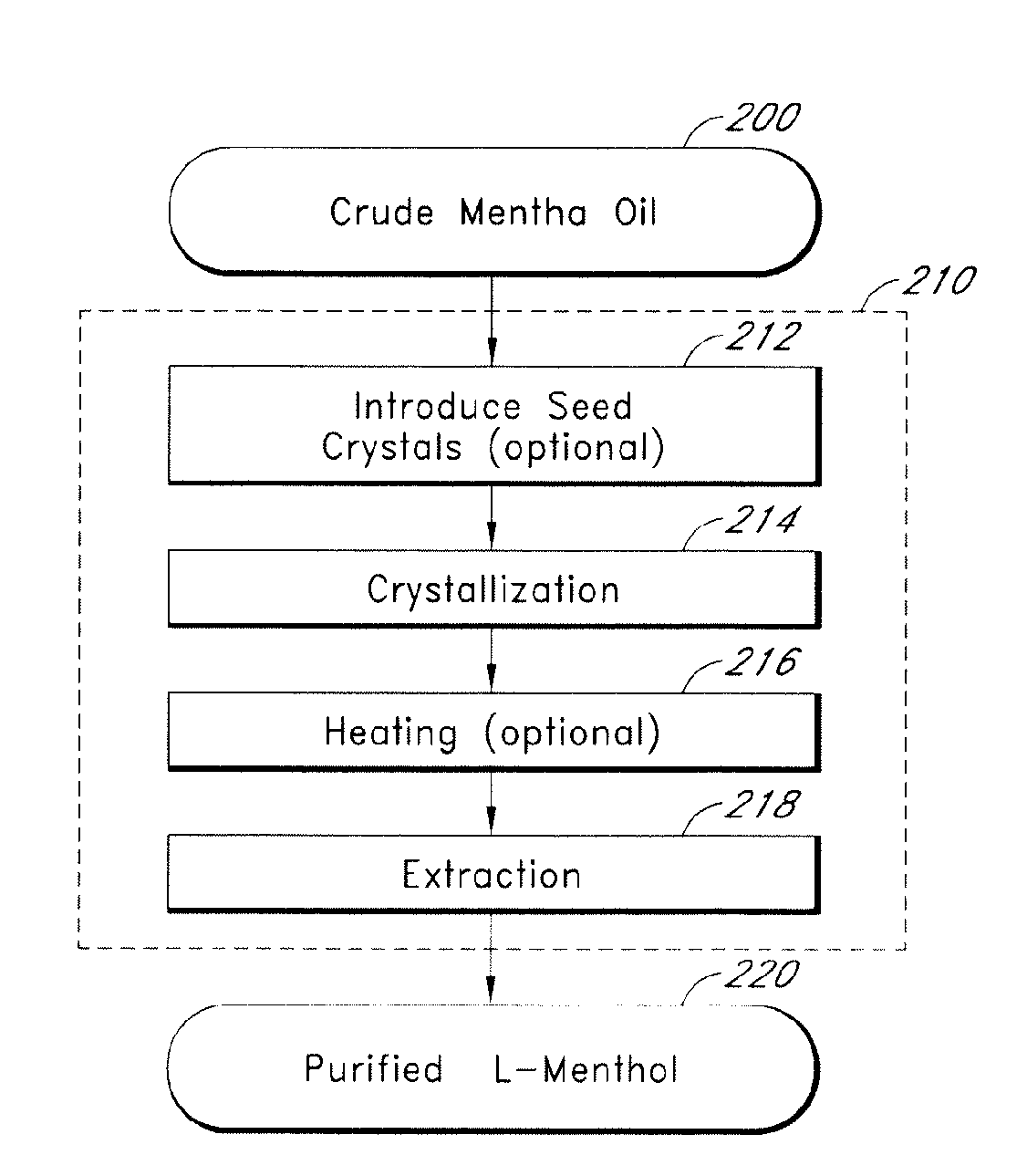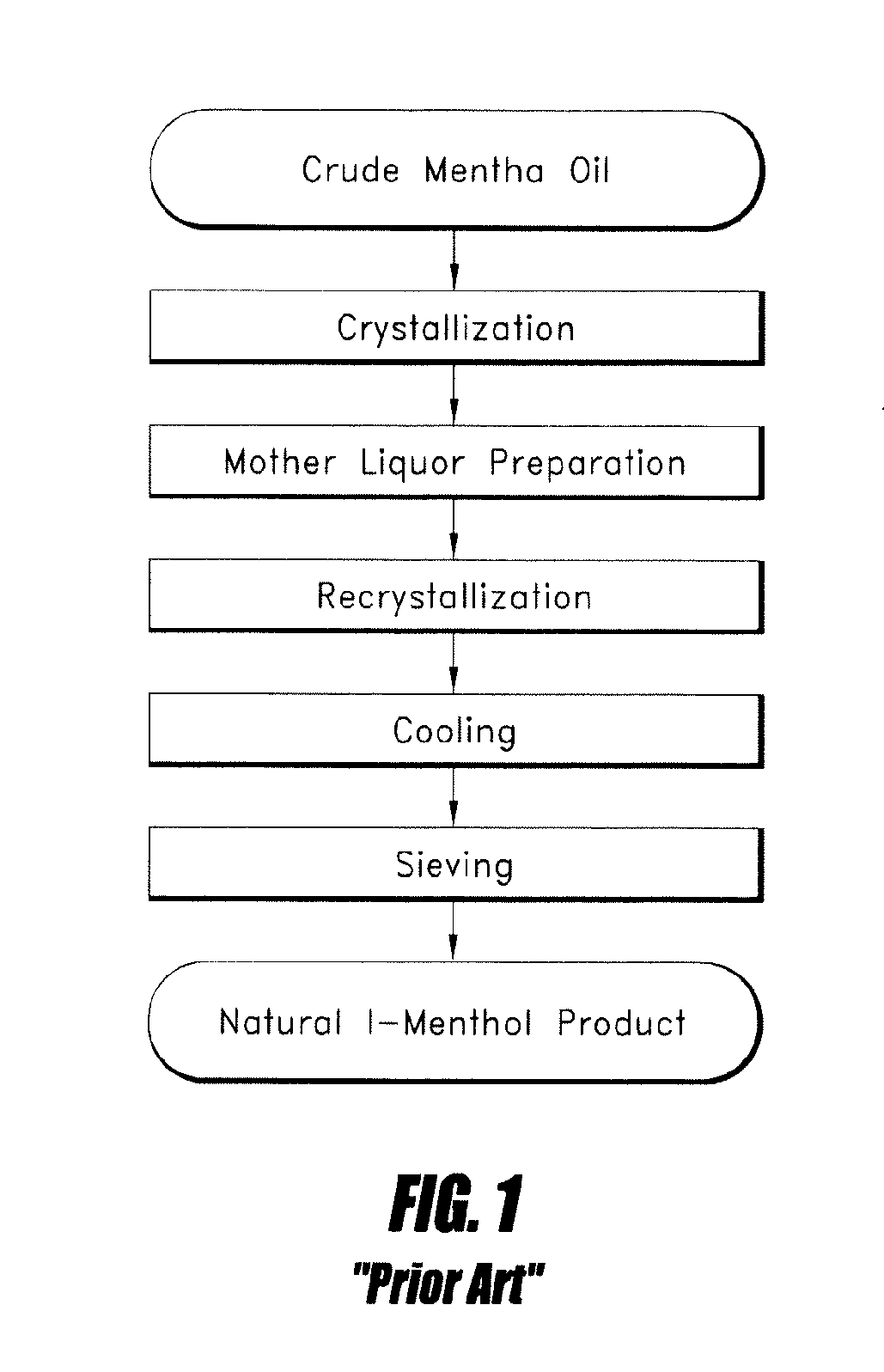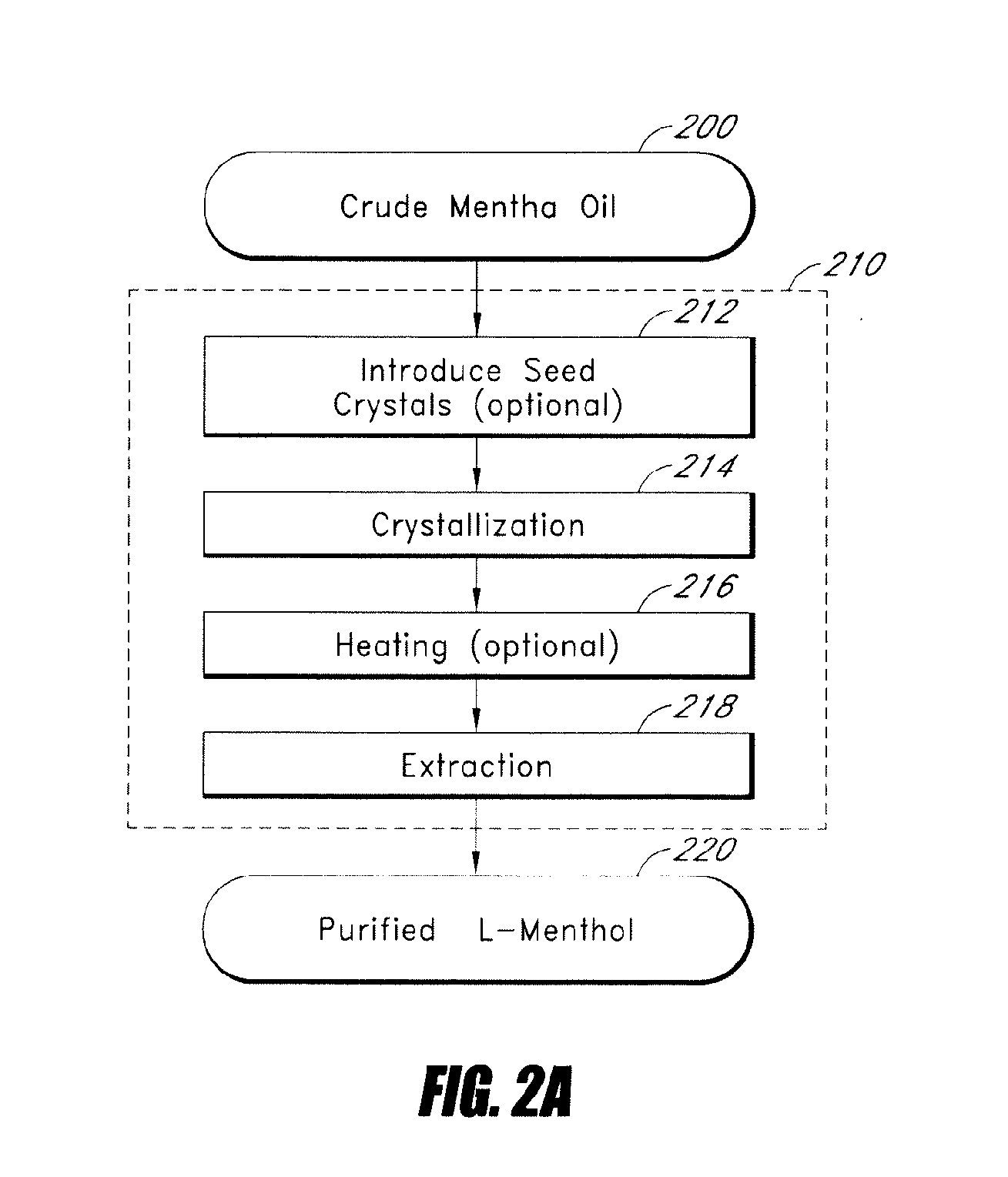Methods and apparatus for production of natural l-menthol
- Summary
- Abstract
- Description
- Claims
- Application Information
AI Technical Summary
Benefits of technology
Problems solved by technology
Method used
Image
Examples
example 1
[0110]This example illustrates possible methods for production of I-menthol having a purity of 99.6% or greater.
[0111]Crude mentha oil (I-menthol purity of about 80%) was transferred from drums to a crystallizer through a one micron filter. The crystallizer included cooling plates on which I-menthol crystals could nucleate and grow. I-Menthol crystals were formed by slow, step-wise cooling of the crystallization chamber from about 25° C. down to about 10° C. over about a 120 hour period, then maintaining the chamber temperature at about 10° C. for about 24 hours. Table 2 shows the temperature of the sides, bottom and cooling plate of the crystallization chamber at various time points during the crystallization process. At then end of about 120 hours, highly pure I-menthol crystals were formed on the plates of the crystallizer.
TABLE 2Temperature (degree Centigrade)Sides ofBottom ofCoolingTimeChamberChamberPlates0303010 5 min.25252524 hr.23232348 hr.21212172 hr.16161696 hr.101010120 ...
example 2
[0115]This example illustrates possible methods for I-menthol pelletization and cooling.
[0116]The highly pure I-menthol produced by the method described in Example 1 was formed into pellets for ease of handling. A pelletizer including a cooling mixer and pelleter was used. The I-menthol was transferred from the stock tank to the cooling mixer of a pelletizer at a rate of about 200 kg / hr. In the cooling mixer, the I-menthol was mixed at about 15° C. for minutes to form a sherbet-like slurry.
[0117]Pellets were formed by extruding the I-menthol slurry through the pelleter and cutting the resulting I-menthol strands into desired lengths. The pelleter outlet was maintained at about 5° C. The pellets were transferred to a dryer and dried using an air flow speed of about 0.9 cubic meters per minute at about 25° C.
example 3
[0118]This example illustrates a preliminary study to determine pelletization conditions using a cooling mixer and pelleter.
[0119]The highly pure I-menthol produced by the method described in Example 1 was formed into pellets using a variety of different conditions to determine the conditions suitable for preparing I-menthol tablets having good hardness and good shape. Conditions used and results from eighteen different pelletization experiments are summarized in Tables 4 and 5 below. The I-menthol was transferred from the stock tank to the cooling mixer of a pelletizer at a rate of about 1.5 kg / hr. In the cooling mixer, the I-menthol was mixed under the conditions shown to form a slurry. The I-menthol slurry was formed into long strands and cut into desired lengths.
TABLE 4Exp. No.010203040506070809cooling mixer:Material feed temp585858586060606065(° C.)Material feed speed1.51.51.51.51.51.51.51.51.5(kg / min)Rotor inlet temp116410489118(° C.)Rotor outlet temp128711101113139(° C.)Jacke...
PUM
| Property | Measurement | Unit |
|---|---|---|
| Temperature | aaaaa | aaaaa |
| Temperature | aaaaa | aaaaa |
| Temperature | aaaaa | aaaaa |
Abstract
Description
Claims
Application Information
 Login to View More
Login to View More - R&D Engineer
- R&D Manager
- IP Professional
- Industry Leading Data Capabilities
- Powerful AI technology
- Patent DNA Extraction
Browse by: Latest US Patents, China's latest patents, Technical Efficacy Thesaurus, Application Domain, Technology Topic, Popular Technical Reports.
© 2024 PatSnap. All rights reserved.Legal|Privacy policy|Modern Slavery Act Transparency Statement|Sitemap|About US| Contact US: help@patsnap.com










